A Love Affair: Gustav Klimt’s Fabric
Austrian Art Nouveau painter Gustav Klimt is world-renowned for his sinuously flowing fabrics that adorned women and intertwined lovers in richly ornate blankets and gowns. But perhaps less well-known is the love affair he had with fashion designer Emilie Floge, and the impact their creative interchange had on the shape of his art. Floge’s loose, bohemian clothes and ‘Reform’ dresses became a defining feature of Klimt’s art, flowing upon bodies of his figures and transforming them into sensuous, erotic and all-powerful goddesses.
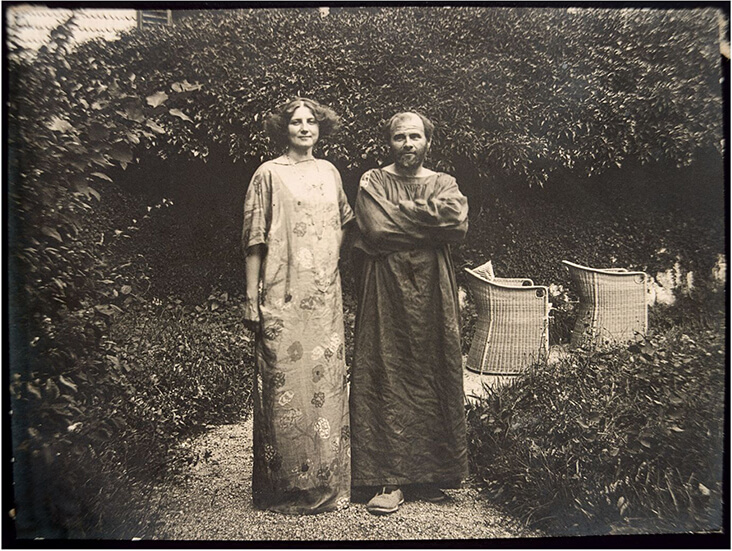
Gustav Klimt and Emilie Floge wearing their loose ‘Reform’ style clothing, image courtesy of The Barbican Centre, London
Klimt was the brightest leader of the Viennese Secession in the late 19th and early 20th century, a radical band of artists who broke with Vienna’s classical conservatism by introducing vibrant and experimental forms of modernism including Art Nouveau, Japonisme and Post-Impressionism. The group’s goal, they stated was to “show the modern man his true face.” At the heart of Klimt’s modernist values was the belief in the unity of the arts, and the dissolution of boundaries between fine and applied practices. Klimt adored women and he was particularly taken with the way textiles, costume and jewellery could ignite the expressive power of his female subjects, as demonstrated in his all-powerful Judith I, 1901.
Klimt met Floge in 1891 and she became his lifelong muse and creative partner for the rest of his life. A strong-minded, independent woman, Floge often appeared as the subject in many of Klimt’s most famous paintings including the dazzling Portrait of Emilie Floge, 1902. As a successful fashion designer, Floge’s work profoundly impacted the nature of Klimt’s art; her long, loose silhouettes, wide ornamental sleeves and elements of Slavic and Hungarian embroidery can be clearly seen in Klimt’s paintings. Floge’s radical designs rejected the restrictive corsetry of the past for a new kind of free-spirited, bohemian woman, and this concept became the cornerstone of Klimt’s art.
In 1904, Emilie Floge and her sister co-founded the boutique Schwestern Flöge (Flöge Sisters), a popular boutique with Vienna’s wealthy elite. One of their most radical designs was the ‘Reform’ dress range, which hung loosely from the shoulders and had long, wide sleeves; the dress subsequently became a symbol for a new brand of woman who was sexually liberated and free. Together Floge and Klimt both designed a series of loose kaftan variations on the ‘Reform’ dress and Klimt made this his trademark style, reportedly wearing this comfortable garment while painting, with nothing underneath.
Klimt benefited from the success of Floge’s business, receiving regular portrait commissions from her clients who he painted wearing Schwestern Flöge clothing. Floge also benefited from the popularity of Klimt’s art, as his paintings promoted her fashion to a wider audience. One journalist of the time praised the way Klimt’s art celebrated, “the new Viennese woman … charmingly immoral, delightfully sinful, enchantingly perverse,” although Floge deserved at least some of the credit for this success.
Over their many years together, both Klimt and Floge avidly collected textiles from a wide array of sources old and new, using them as inspiration for their respective creative endeavours. Many of their collected textiles came from the radical Viennese Wiener Werkstatte, a workshop space that promoted the Art Nouveau style, with whiplash curls and shimmering decorative patterns. In time Floge and Klimt even made their own textile designs which were produced by Wiener Werkstatte and these fed back into Klimt’s paintings – various samples of Klimt’s fabric designs are held in the collection of the Metropolitan Museum of Modern Art in New York, featuring the same curls, swirls, scrolls and ornate passages of pattern as his works of art.
Klimt’s most famous painting, The Kiss, 1905-09 is thought to be an ode to his love affair with Floge, illustrating the incredible potent synergy between them that was the catalyst for their success. It captures Klimt and Floge bound together in an intimately tight embrace, while glistening and sumptuously decadent fabric wraps them up in the electrifying chemistry of their love.





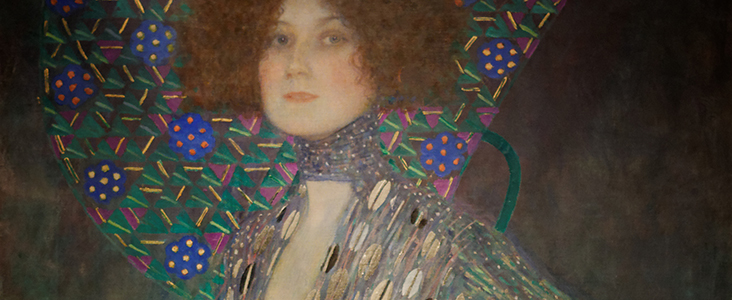
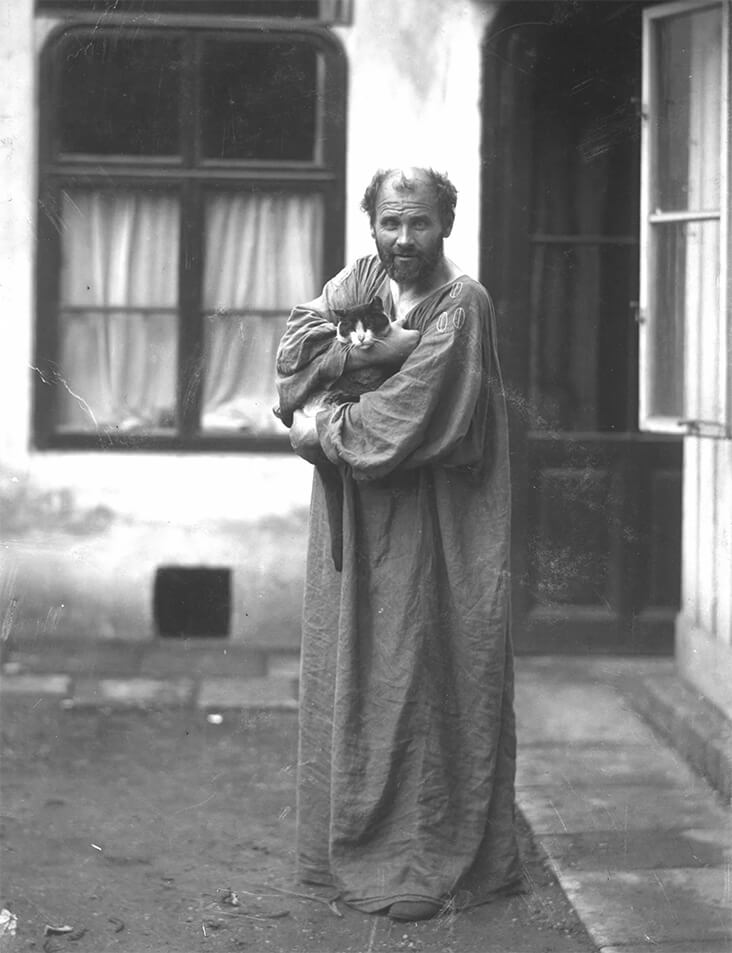
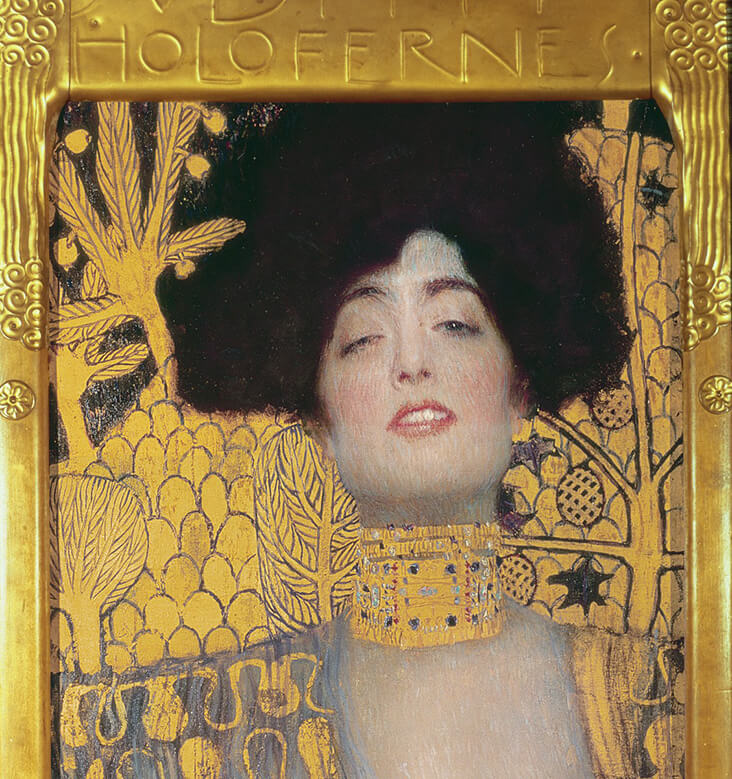
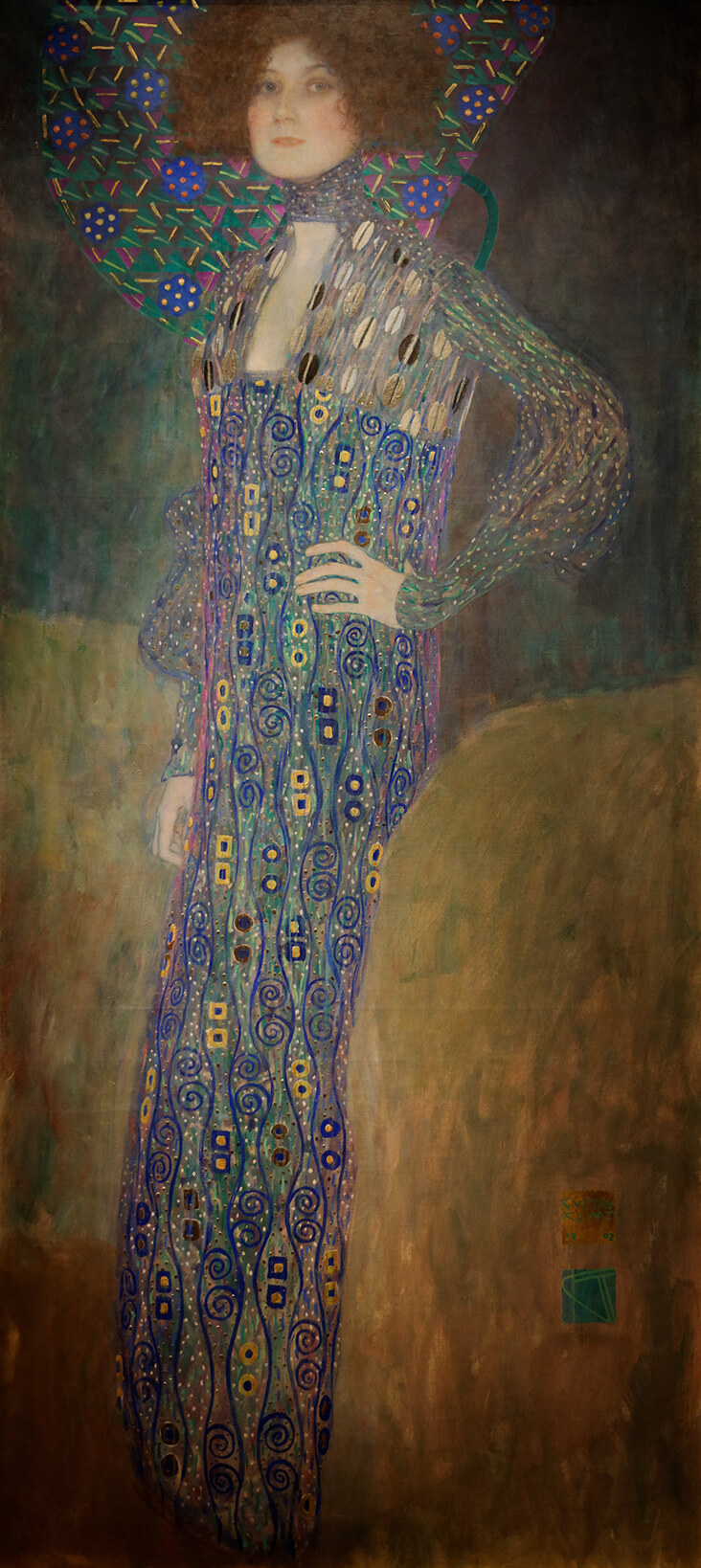

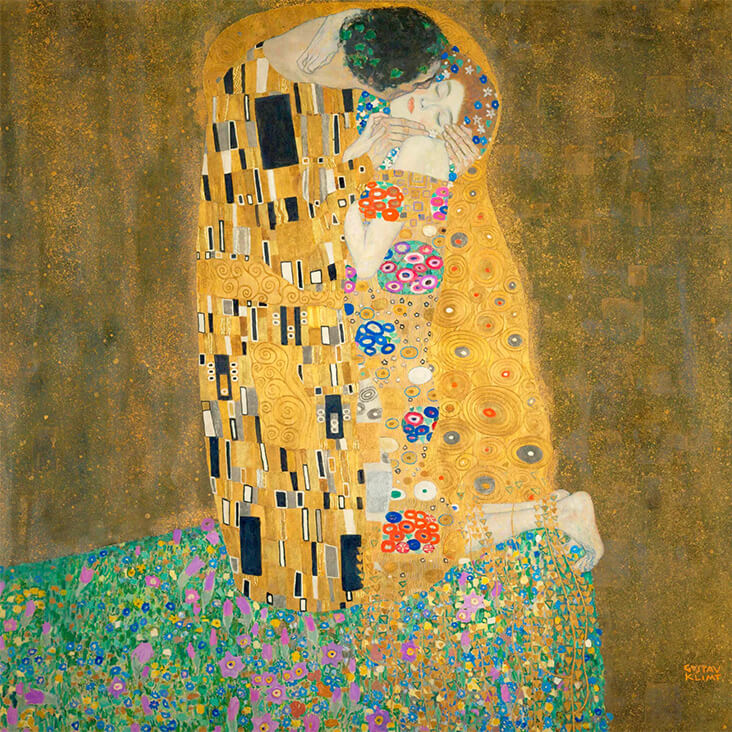







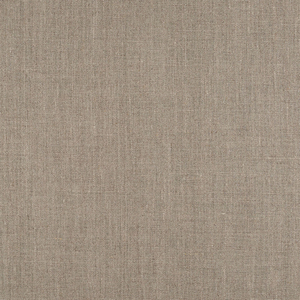

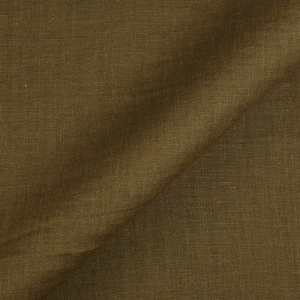


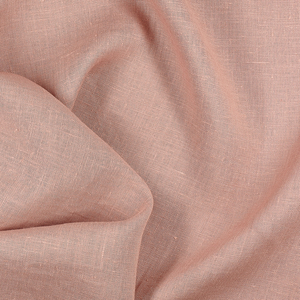




















7 Comments
Pingback:
Gustav Klimt Inspired Art: Golden Influence on Modern Media and Pop Culture - Pigment PoolKit Lang
Thank you for this article. Informative and well written!
D Fetterman
Thank you for sharing and educating. Klimt has always been one of my favourite artists. More people should know of him.
Rosemary Antel
Your articles are all so inspirational. I especially enjoyed this one, with the swirling richness of the fabrics depicted. Reminds me to think creatively more often!
Vicki Lang
thank you for such a wonderful article of a talented couple. I love learning about the early fashion designers. this one is extra special because it combines fashion and art.
Marilee Henneberger
I’ve long been an admirer of Klimt, especially after a short visit in Vienna and seeing a few of his paintings up close and personal for the first time. Recently, I had the relaxing pleasure of putting together a “pandemic” 1,000 piece puzzle of The Kiss. During the week it took to complete, I was enthralled by the depiction of the sumptuous golden fabrics in the picture. Thank you for this article. I hadn’t known much of his life, nor his collaborative relationship with Floge. Besides, I love wearing flowing comfy caftans… so much more elegant than sweatpants.
Heather Taylor
Thank you fo much for these posts. I knew but did’t know of this artist. This brief reminder of these talented and transforming artist encourage and inspire me to go out of the box. Please keep them coming. I really enjoy a morning read before heading to my sewing studio.